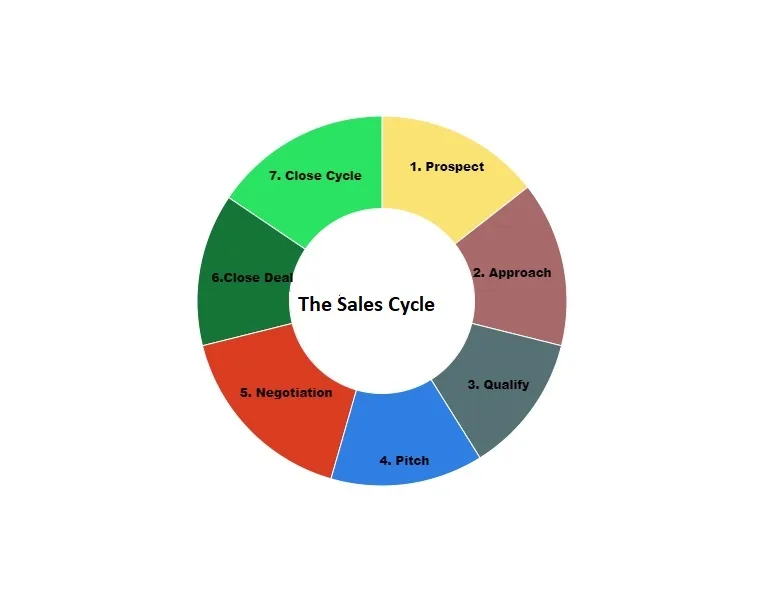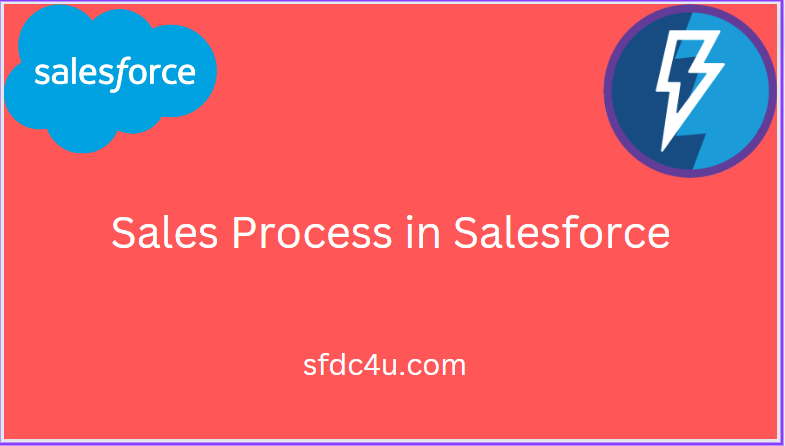A sales process in Salesforce is a set of important steps that your sales team can follow to complete a sales cycle. It can act as a roadmap for your sales team to successfully move prospects through the necessary stages of the sales cycle till they are converted into customers.
An ideal sales process is:
- Customer-centric
- Clear and actionable
- Replicable
- Predictable
- Goal-oriented
- Measurable
- Flexible
Benefits of implementing a sales process:
- Stay on track: A sales process can guide sales teams to always follow all the right steps for converting a prospect quickly and easily.
- Better understand prospects: An effective sales process also outlines buyer personas and ideal customer profiles, helping sales reps identify those most likely to convert.
- Focus on qualified leads: Sales reps can then dedicate their time and effort towards engaging prospects with higher potential to convert. By prioritizing highly qualified leads, sales reps can increase their chances of closing more deals in less time, and possibly reduce the overall sales cycle duration too.
- Accurately forecast sales: Knowing at which stage of the process each sales reps is in can help management forecast sales more accurately.
- Follow up in a timely manner: A sales process can ensure that reps always follow up with prospects in the right moments and channels to keep them interested.
- Enhance customer experience: A sales process ensures that reps follow the necessary steps to gradually move prospects towards a purchase while keeping their buying behavior and expectations in mind.
- Get new reps up to speed: A well-defined and consistent sales process makes it easier for new sales reps to understand the company’s processes and get up to speed rapidly.
There are numerous Salesforce standard objects that are related to the Sales stage. These objects are as follows: –
- Leads
- Accounts
- Contacts
- Opportunities
Stages of the sales cycle
Generally, the sales cycle consists of 7 main stages (although not applicable to all business).
A B2B sales cycle is much longer and might consist of different stages as compared to a B2C sales cycle.

Let’s dig into depth of each stage of the sales cycle:
Stage 1: Prospecting to identify the ideal customer
Prospecting is what kicks off the sales cycle. Without leads, your salespeople will have no one to sell to.
This helps your salespeople identify quality leads because you know where to look and who you’re looking for. At the same time, it makes sure that you are what the potential customer is looking for.
Stage 2: Reach out to your potential customers
Now we have got all our leads ready, it’s time to approach them. We need to do some research on their business requirement and how we as a solution provider could help them.
There are different ways of approaching the customer like – call, email, social media etc.
Stage 3: Qualify your prospects
In practical world, every lead that we may approach might not turn into customer. That’s why business would have to qualify lead before pushing to sales funnel. There are different factors we need to pay attention to qualify a lead i.e.-
- Need – Does your target audience have a strong need for your product or service?
- Budget – Can they afford your product or service?
- Authority – Do they have the authority to approve purchases?
- Timing of need – Do they need your product or service now? How about in the long run?
This helps your sales reps narrow down the pool of leads to the prospects with the highest buying potential who have a much higher chance of purchasing from you eventually.
Stage 4: Start selling your company and product/service
So now you have got customer and qualified lead. It’s time to pitch them for the product and services of your company. It can be done via- call or email.
Your pitch should be relevant and personalized. Highlight the specific problem your prospect is facing and how exactly your product solves that problem. After all, your aim here is to try to convince them why your product makes sense.
Stage 5: Handle objections and comparisons
This stage is basically a negotiation stage where a customer might argue that our product is not great or competitive or costly. Here you need to deal with it patiently and you need to highlight the benefits of using your product and the value add that it carries.
Stage 6: Close the deal
This is the final stage of the sales process where the prospect confirms they want the product and are ready to pay. Get your customer success team to follow up and guide them through the onboarding process, and make sure that they know how to use your product or service.
Stage 7: Closing the sales cycle
There can be two scenarios in this stage
- Deal done: Thank them for doing business with you and assure them that you will provide them with the best customer support possible.
- Deal Rejected: When the deal is rejected, ask them if they would like to receive content casually from your team for free. Then with the help of emails provide contacts with content about your company, industry, and product in a bid to convince them that you are the best company to solve their business problems.
Reference: Sales process
Read more: Salesforce Apex Best Practices
